A bright, attracting look, an elegant plant with an unusual and intricate name - "Diorsfootka". This sunny guest from South Africa has long grown in our climate and pleases abundant blossoms throughout the warm season.
Magnificent compact bushes are thickly covered with exquisite and gentle "daisies" of red, yellow, white, lilac color.
Highly decorative qualities of annual culture are extremely popular with landscape designers and ordinary flower flower.
Unpretentious and life-improper culture is absolutely undemanding to care, it is easily multiplied and quickly coming up in a new place.
Dorfootek, description of the plant
- Dimorfooteque - a herbaceous plant from the Astrov family, intended for planting into an open ground. Cultivated, mainly like annual culture, although it can grow for several years in one place, thanks to the annual self-sow.
- Translated the word "dimorpho" denotes "two forms", and "Teka" - "place". The unusual name is due to the presence of two types of petals on the flower: the main bobbed and tubular forming the core of the flower. In the people of Dorfootetka, they are still referred to as "Cape Nogot" (in the form of petals) and the "African chamomile" (at the place of origin).
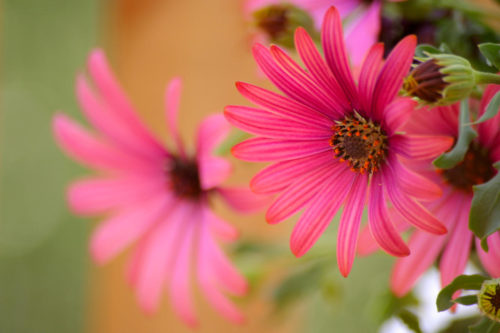
- South Africa is considered the natural range of colors of the Diemorfootki.
- Dorfootek is a low bushy plant, with a branched or stop stem, reaching a maximum of 60 cm.
- The inflorescences are of the form of simple upshine baskets, a diameter of about 10 cm. The color of the flowers is very diverse and varies from white to yellow, from pink to orange, from a lilac to a blue shade. Such an abundance of paints can "satisfy" tastes of any, even the most demanding, flower.
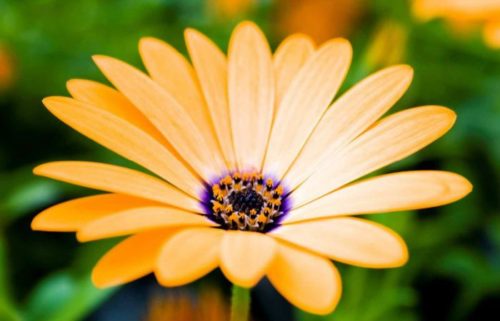
- Separately taken diorphothek flowers "live" about 5 days, after which they are replaced by new buds. The constant update of the inflorescence creates the effect of continuously blooming thick "carpet".
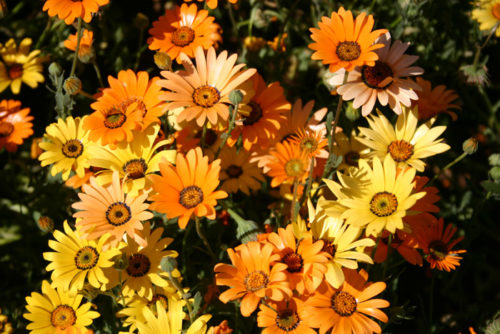
- Leaves are elongated and narrow, with recesses along the edges. This feature of the sheet plate allowed us to give a name to one of the main types of annual culture - "LED DIORFOTEK".
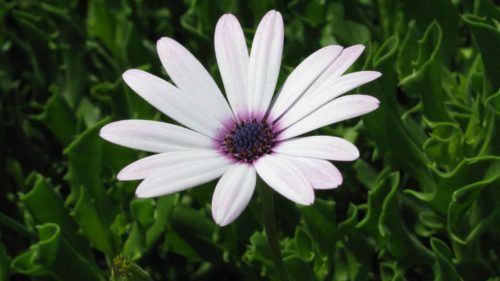
- The rod root system perfectly transfers drought and reacts poorly to moisture stagnation.
- Seeds of dimorphothek, as well as flower petals, are formed by two types: wedge-shaped curved and smooth non-convex seeds. Different seeds form in the future absolutely identical color of the dimorphotki.
- Unpretentious, but very attractive, the plant does not lose its decorativeness throughout the warm season. Continuous abundant flowering lasts from June to September.
- The plant, originally from hot africa, is not frost-resistant and poorly tolerates cold, therefore it is cultivated in our climatic zone for one vegetation period, as a uneline.
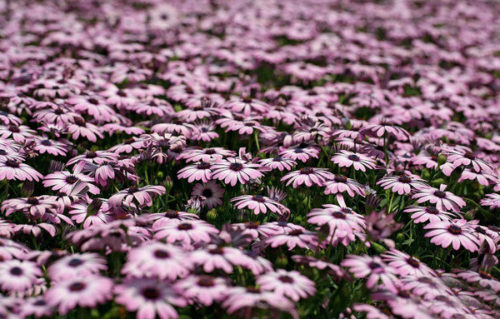
DIORFOTEK, species and varieties
Rod has more than 20 species, of which two types are the most common: the dimorphothek of the larded and the diorfootose rain. When crossing these species was also removed a hybrid, characterized by major bright inflorescences.
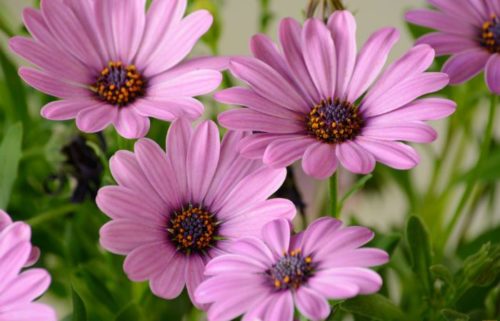
Dimorfooteque ladder
The average (up to 40 cm) a gustanite species forms compact and lush bushes. Annestly herbal plant is highlighted with long sowned and laid leaves. Large inflorescences are bright orange colors have a dark brown, contrasting, core. Flowerines are high, pubescent. Blossom comes in the second half of June and lasts until the end of September.
The best variety is:
- The "Polar Star" grade has a hemispherical shape of a bush, thick-seated large snow-white flowers. Due to contrast, dark brown, core, inflorescences resemble chamomile.
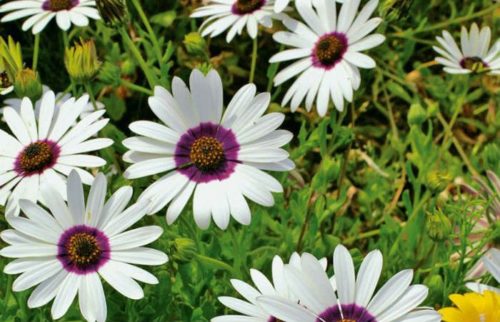
Dorfootek Rainy.
Sharply (up to 20 cm) This annual, with extended sowed leaves and stand stem. High blooms ends with two-color inflorescence: on top of light color, bottom - purple purple. In the center of the inflorescence - a disc-golden middle. The species exudes a pleasant fragrance.
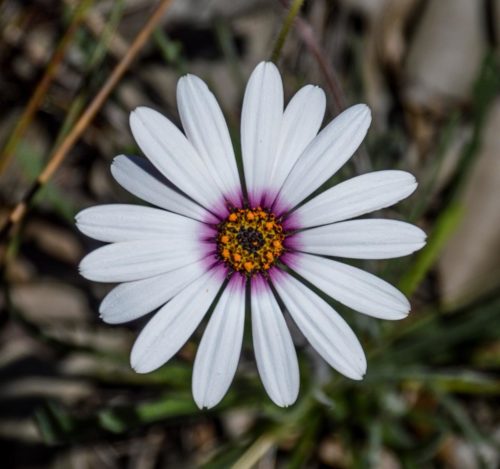
Dorphothek hybrid
The branched stem of the species grows up to 40 cm in height, gear leaves or solid. Large bright inflorescences are impressive abundance of shades of blue, orange, red or pink.
The most popular varieties:
- The Goliath Theater variety looks like a bulk hemispherical bush with orange large inflorescences and a black core.
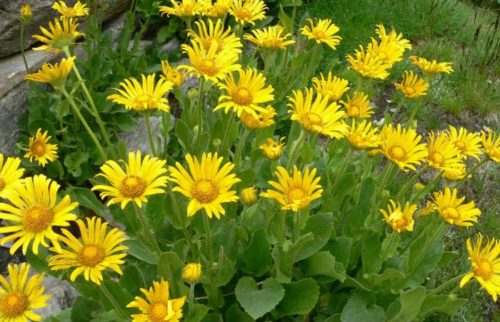
- The grade "Hooker" is distinguished by bright orange inflorescences and a high (up to 50 cm) compact bush.
- The Rigenz grade forms a low-speed neat and tight bushing with sky-blue inflorescences.
- The Snow Maiden grade corresponds to the name and stands out by snow-white petals, passing to the base in blue and ending a bright black spot. The annual forms a lush compact bush.
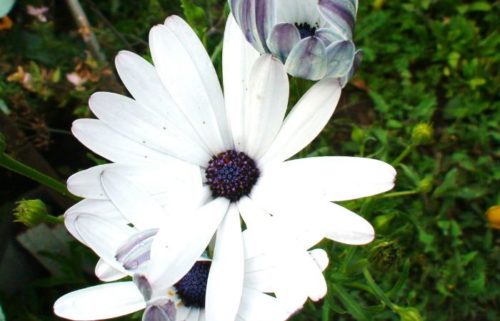
- The "Starshin" variety is known for colorful inflorescences: white, pink, carmine and golden core. Not high (up to 25 cm) The dense bush is extremely attractive and unpretentious in care.
- The Dzhaint Mikst variety is distinguished by multi-colored inflorescences dropping on one plant. Abundant flowering and variety of colors benefit from a variety among other varieties. A compact bush reaches a height of no more than 30 cm.
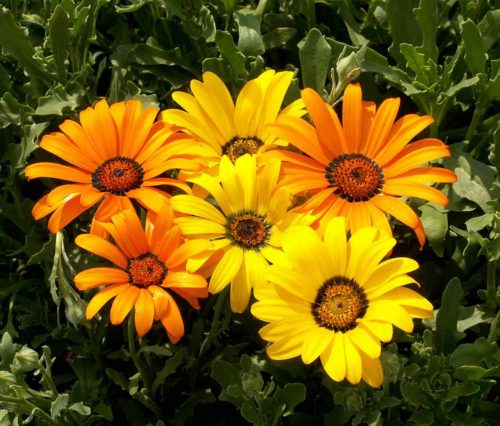
- The "Tetra Polishtern" grade forms low bushes with large white inflorescences. In the center of the snow-white flower is highlighted with a purple core.
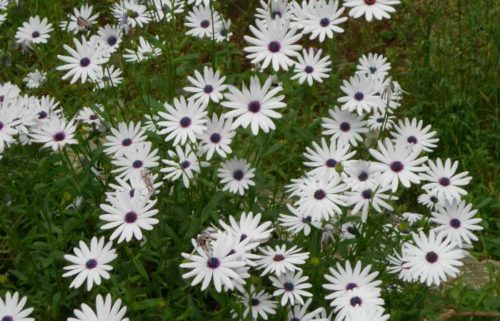
- The grade "Glycing White" is suitable for landing in balcony boxes, is characterized by low and dense bushes with white inflorescences and a black core.
Diorsfootka and Osteospermum
Flowers of dimorphothek and osteospermum are often confused. And it is not surprising, because they are very similar and are close relatives. Both plants - a representative of one astrova family, both of course from South Africa. Externally, herbaceous semi-stares also have a number of similar signs: a branching stem, height of bustles, inflorescences, similar to chamomile. The main difference of childbirth is that osteospermum is a long-term culture, while the dimorphothek is considered annual plant.
DIORRFOTEK, Growing Features
- It is noteworthy that the inflorescences of the Dorsfootka are revealed only during the day, in sunny weather. On cloudy or rainy days, as well as at night, the flowers are completely closed. Such an adaptation reliably protects pollen from wetting and moisture.
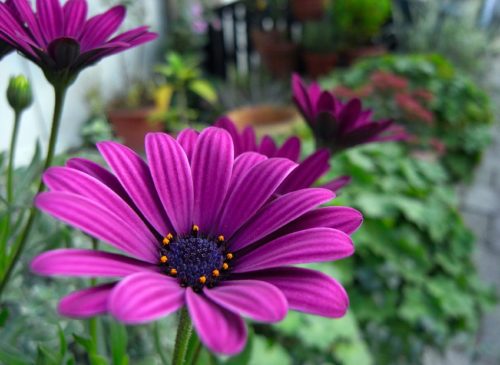
- To preserve an attractive decorative appearance of a blooming shrub and stimulate the formation of new buds, thereby prolonged flowering period, it is necessary to regularly remove the boiled inflorescences from the plants.
- Some varieties of the dimorphothek are painlessly carry small freezes, so they can be raised as a perennial plant. To do this, it should be transplanted late in the fall of the choppers of the dimorphothek in flower pots and to extend them in room conditions. The plant is scarcely, so that the ground is slightly moistened. With the onset of sustainable heat, the bustice is cut (up to half the length of the stems) and transplanted into the flower garden.
- The overabundance of fertilizer in the soil will allow the plant to form a powerful thick bush, but, unfortunately, bloom will be rare and not long. It is enough when planting (in the process of people) to make a moderate amount of organic matter, and in the period of the bootonization, it is filing the plant with a weak solution of mineral fertilizers. Excessive humidity (both soil and air) also adversely affects the decorativeness of annual.
- If the quality of the soil or the selected landing place does not allow to pass moisture well, when planting the plant, it is better to drain the plot, ensuring a permanent removal of extra moisture and secretions to the distortion of water. Crushed stone, clamzit, broken brick or crushed slate suitable as a drainage layer.
Place for landing of the dimorphotheki
Having planting the dimorfootka into an open soil, it is important to choose the right place to fit so that the shrub is able to fully demonstrate the beauty of flowering and brightness of the paints.
- Dorphothek is a light and a thermal-loving plant, prefers open and sunny terrain, better from the south side of the site. Lightweight is also allowed. A well-lit plot stimulates the extension of green mass, abundant flowering and saturated color of the inflorescence of the plant. In the shade, the annual develops slowly and is unlikely to delight flowering. Drafts and strong winds practically do not affect the development of a herbaceous plant.
- In the wild, the culture grows on loose rubble soil, where water does not cause. The rod, long root is able to absorb moisture from the very depths of the soil layer. Therefore, the soil for the cultivation of the dimorphotki should be loose, moderately nutritious, is a water permeable, with a neutral medium reaction. In addition, necessarily the presence of a drainage layer. Sloated, wetlands, stagnant soils, culture does not accept. The plant on the sandy soil speaks well. If the ground in the garden is heavy and tight, the flower is recommended to add sand and humus to it.
- Drought-resistant dimorphothek does not make a lowland locality where water is often stared after the rain. Do not land the annual and near the water flow, for example, from the roof. In any case, excessive humidity negatively affects the development of the bush.
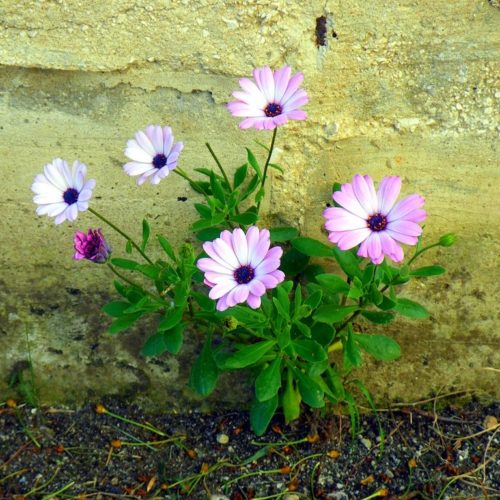
DIORFOTEK, Agrotechnology landing
- You can grow the dimorfootetuette in two ways: seedlings and seed. Moreover, the flower products note the indisputable advantage of the reckless method, because the gentle seedlings of the plant often dies in transplantation. Although there are some disagreements here: plants grown from seedlings in individual cups are practically not injured in transplanting into the ground, but blooming earlier than seeds planted immediately into open ground.
- The period when to plant the dimorfootetuette depends on the method of sowing seeds: on seedlings or immediately to flower. In any case, the landing of the thermo-loving annual is carried out in spring time.
- For the prevention of diseases, the seeds before sowing is better to be treated with potassium permanganate solution. For this, sorted seeds are soaked for 30 minutes in a weak solution of manganese. After disinfection, the seed material is ready for disembodies.
The cultivation of dimorphothek from seeds is not a complex technological process, which, if desired, will master any, even a beginner, flower water.
Sowing seeds of Diemorfotheki to seedlings
- Sowing seeds to seedlings are held in March-April to the month, so that the seedlings can already be planted in an open ground.
- First of all, the capacity for the future seedlings are prepared: fill it with soil from the garden land, humidia and sand from the ratio of 1: 1: 1. The humus can be replaced with peat. Additionally, the soils are recommended to disinfect (fervor, rolling in the oven).
- The sinking seeds are covered with a thin layer of the soil substrate, moisturized from the spray gun and cover the glass container, the construction of a mini-greenhouse. It is not necessary to deepen the seeds into the soil.
- The average temperature regime for germination of seed is + 16-18 ° C.
- After 1-1.5 weeks, the first sprouts will appear. Care of seedlings includes regular ventilation and watering.
- In the phase of the 3rd leaves, the seedlings are peeling, transplancing into separate containers. You can do without a transplantation, immediately disembarking seeds (2-3 pcs.) In individual peat cups. Such containers are better to put on the overall pallet, put on the windowsill and cover with glass.
- Preparing seedlings to the transplant to the garden, it is important to gradually teach the dimorfootcoce to street conditions. First, open the window and repair the room, then (2 weeks before the landing) are brought out a balcony or outside, every day increasing the duration of staying in the air (up to 1 day).
- Having planted seedlings to open soil, it should be maximally saved by a naturally nickene room of an earth from an individual pot, then the survival rate will be high. Good results give the technique of "Turning" plants when the roots are practically not injured.
- For landing, they prepare small wells, in which the seedlings are cheered. The well after landing is abundantly watered with water. The distance between the plants is withstanding about 20-30 cm.
- By purchasing ready-made empty material, it is necessary to pay attention to the seedlings grow in individual cups, they were strong and well developed, and the root did not germinate into the drainage hole.
Sowing Seeds Diemorfotheki in Open Soil
- Seeds in open soil are sown in the second half of spring (in May), when the threat of return freezers and the warm weather will be installed.
- Pre-prepare a garden: drip, loose, breaking earthen kits, remove weeds.
- Then, in the light soil evenly sowed the planting material, the ground is slightly sprinkled and watered with water from fine watering.
- Acceleration of seed germination will help the manufacture of a mini-greenhouse from the film on the bed.
- After a week, the first shoots appear, which, if necessary, thinned. The interval between seedlings should be at least 15-20 cm.
- In the phase of 2-3 of these leaves, seedlings are fed with liquid fertilizer for seedlings. Weak solutions of the "Light" complex (1 \\ 2 tbsp. L. On 10 liters of water) are suitable.
- The flowering of dimorphotki occurs around 1.5-2 months after the appearance of germs.
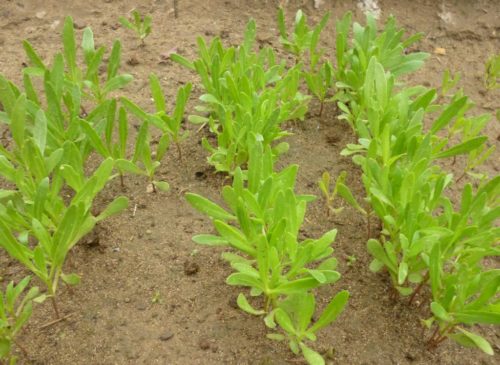
DIORRFOTEK, CARE FEATURES
"African beauty" feels comfortable in our climate and does not require much care. The main thing is to comply with key preferences of annual culture, and abundant flowering does not make himself wait long.
- Watering the diorphothek kickets should be regularly, as the soil dried up, but moderately, without excessive convergence. In this case, there will be a lack of moisture than its oversupportment or, even worse, stagnation.
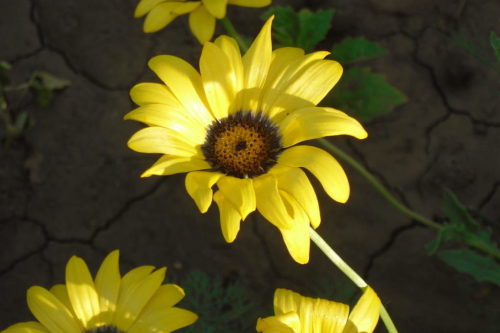
- The removal of weed grass and soil looser is especially important during the development of young bustle. Adult, crushed, plant over time suppresses any weeds.
- It is not recommended to feed the culture with complex mineral complexes, provoking the growing green mass to the damage to flowering. Few concentrated phosphorus potash feeders (potash societ or superphosphate) are suitable during the bootonization of the plant.
- In most cases, the dimorfootose is resistant to diseases and pest attacks. In the period of rain and high humidity it is possible to infect the plant with a gray rot, when the leaves and stems appear nasya pubescent stains. In this case, the infected instances are destroyed, and the remaining bushes are processed, for example, "phytoosporin". If the landings of the dimorphotheki are infected with tongs or tool - appropriate insecticides ("Akarin", "Fufanon", "Biotline", "Carbofos", "PhyTenerm") will be useful. Slugs are collected manually and destroyed. And so that the representatives of the buchelogs do not annoy the plant, the dry mustard or burning pepper scatter under the bushes.
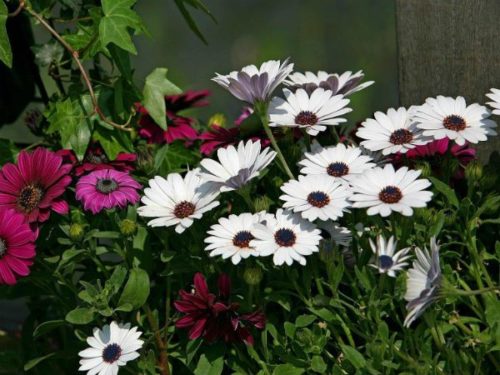
Reproduction of Diemfotheki
Dorfootek - self-polishing plant, multiplies with seeds that are collected in summer.
- Given the uneven ripening of seeds, they are collected in several goals. Choosing seeds for landing is necessary from the largest, well-developed and decorative couppers of the dimorphothek. Also in the calculation take time of flowering - it is better to select seeds from the very first inflorescences. The seeds collected in the future will continue to ensure the maximum decorativeness of the surroved plants of the distortic.
- Signs of full ripening seed will be their darkening and rash from seed boxes. Summer seeds often give abundant plant self-seams.
- To assemble the seeds of the baskets you can schedule them during flowering. And after the fading of flowers, tie a faded scenery gauze to the full aging of the seed. If you cut out not fully allowed seed boxes - they can be kept on the windowsill until full ripening.
- Collected seeds retain the germination of 2-3 years. It should be stored in a dry and cool place, better in paper packaging.
Dorfoothek in Landscape Design
- Highly decorative qualities of the dimorphothek allow you to actively use this herbaceous plant for designing a variety of landscaped designs, parks, squares, flower beds and flower beds. The unpretentiousness and endurance of culture, along with a long period of flowering, contribute to the widespread spread in flower growing.
- The dimorfootetuette is planted both separate, solo, plant and groups. The flowering curtains of the "African chamomile" with landings of nasturtiums, petunitions, heliotrops, pelargoniums and other flowering crops look sophisticated. And the lowest varieties of the dimorphothek are especially good in curbdoms or along the tracks.
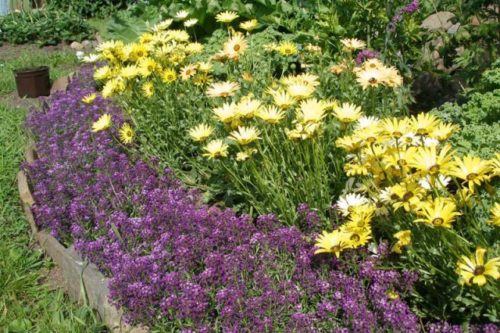
- The annual is used in the design of rocaries, chains or alpine slides. Bright baskets of the dimorphothek look effectively against the background of silver nesia of cineral foliage.
- Perfectly feel the dimorphothek, landed on a plot with other drought-resistant plants. For the landing, you can safely use rocky or rubble soil - the natural habitat of the southern annual culture.
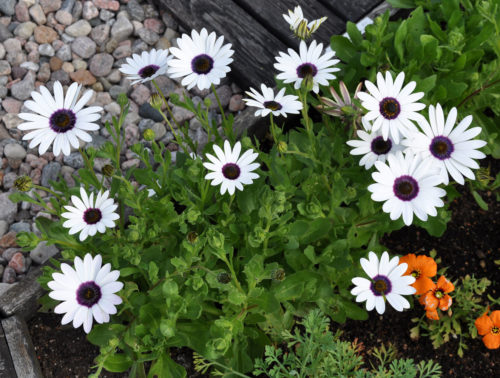
- The low-spirited compact varieties of the dimorphothek are attractively looking as ampel cultures: in porridge, vases or flower pots. Lined on balconies, terraces or loggias, long blooming flowers of the dimorphotheki organically fit into the garden design and the whole summer "please the eye".
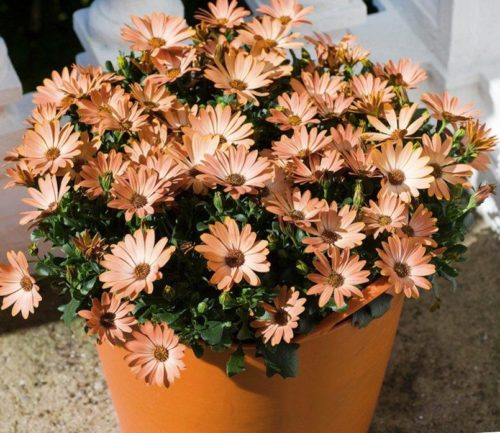
- Some varieties of dimorphothek are used on the cut, for compiling bakery compositions.
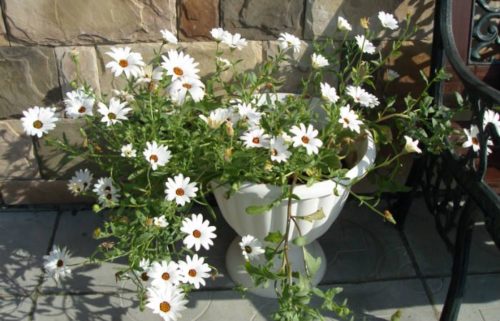
Summing up, we note the main advantages of the herbal culture of the dimorphotheki:
- unpretentious care and endurance;
- long flowering period and attractive decorative look;
- variety of varieties and varieties;
- resistance to drought and diseases;
- indifferent attitude towards drafts or strong winds;
- negative attitude to excessive soil fertilizer;
- a simple way of reproduction;
- the possibility of abundant self-seams.
Such a list of positive qualities and characteristics of the plant, perhaps, will not leave indifferent a single lover of flowers and a connoisseur of natural beauty.

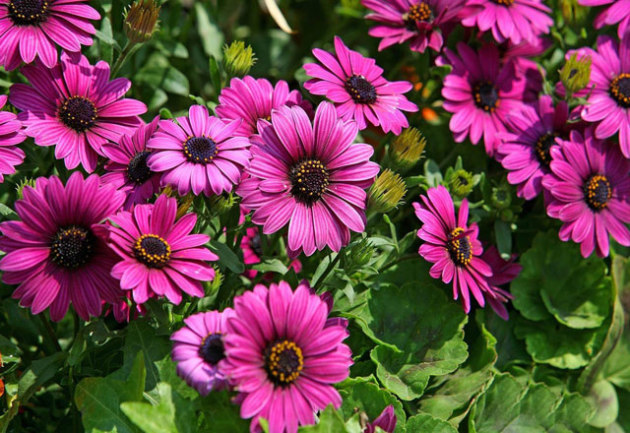
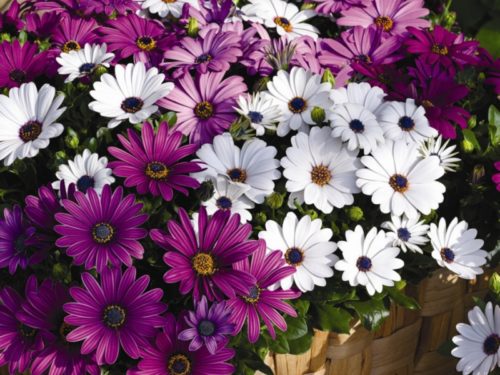
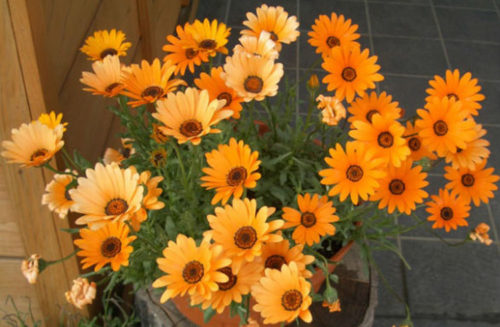
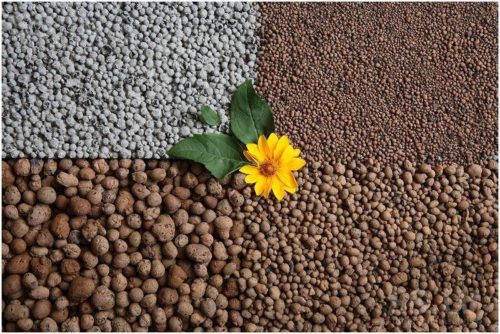
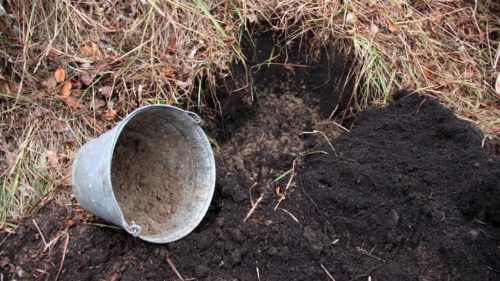
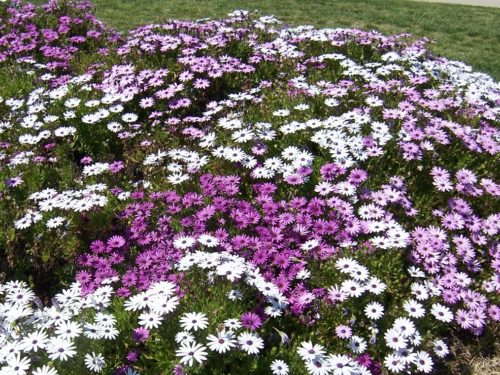
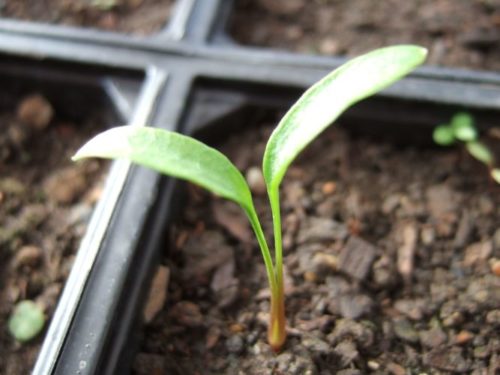
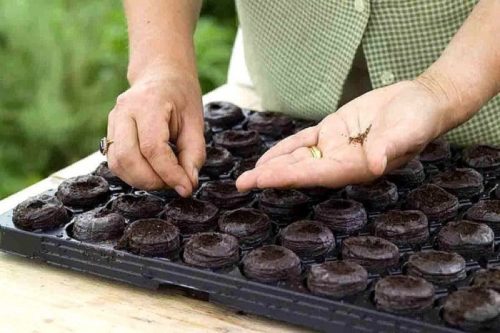
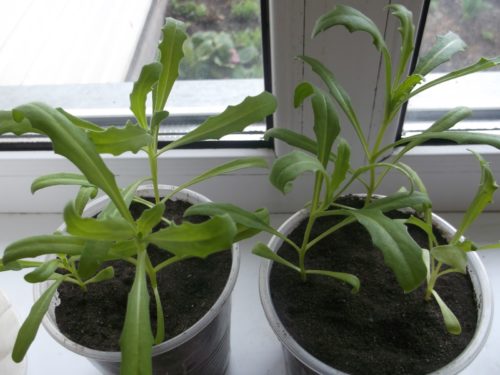
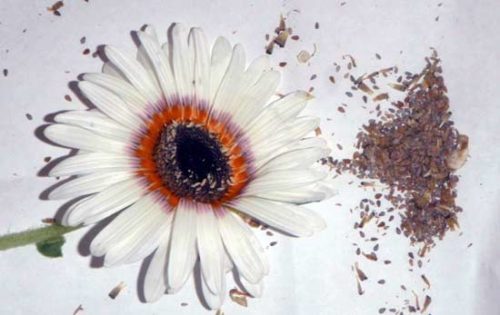
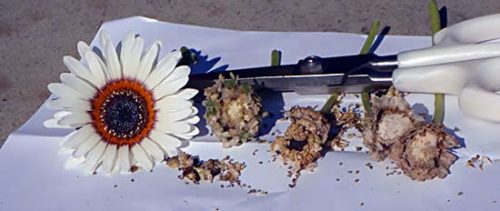
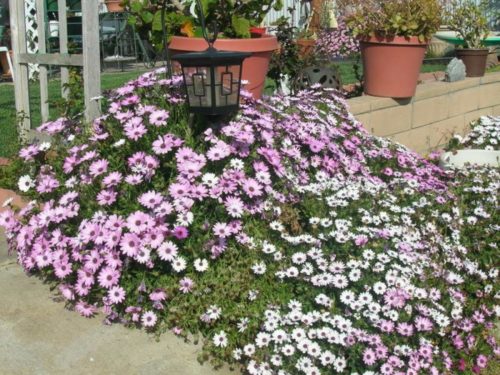
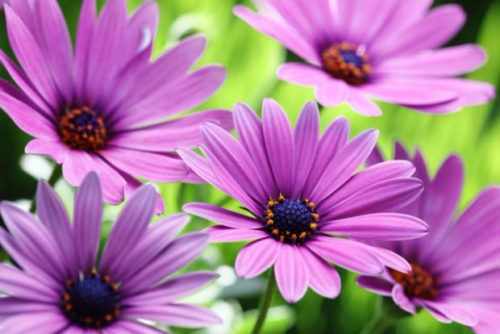
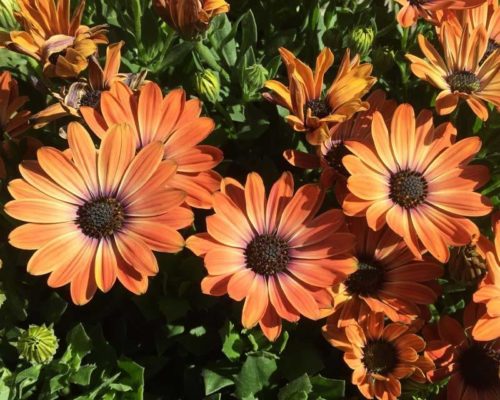
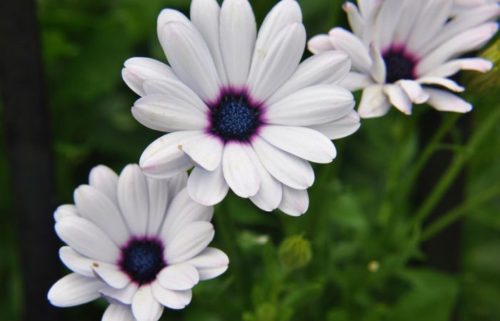
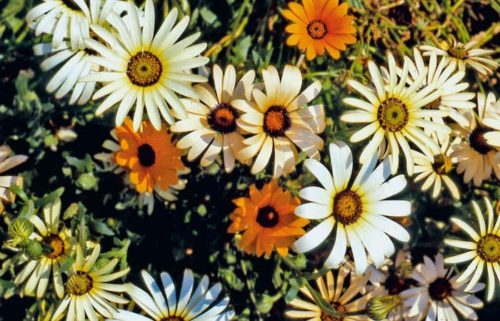
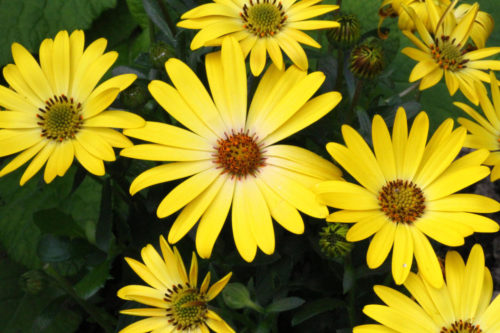
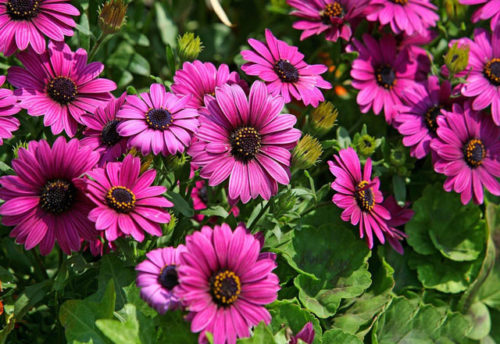
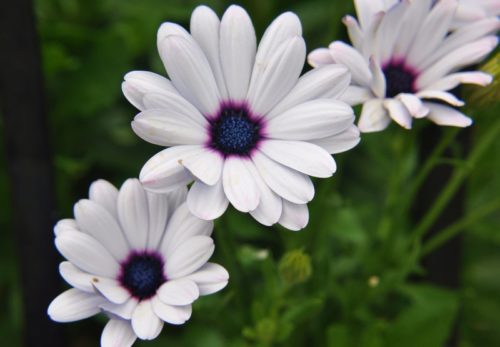
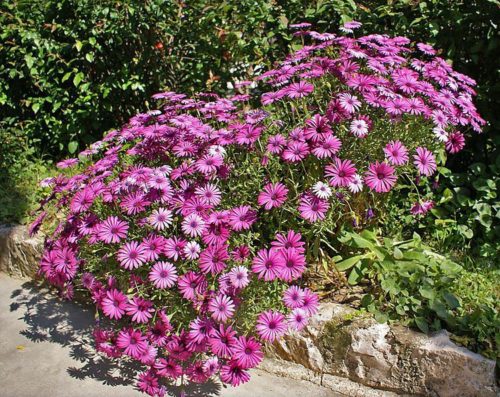
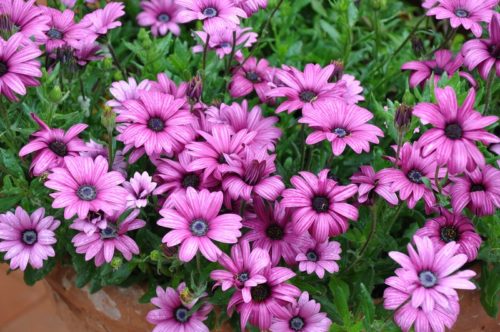
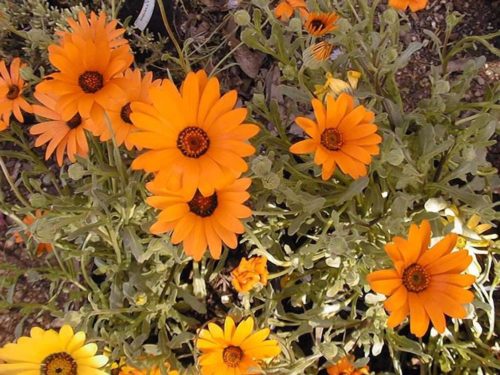
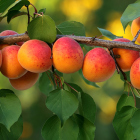
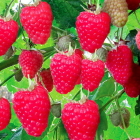
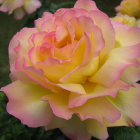
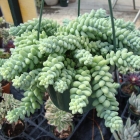
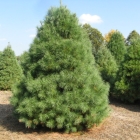
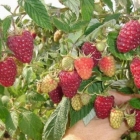
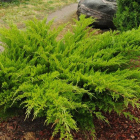
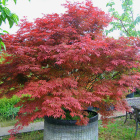
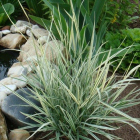
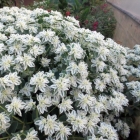
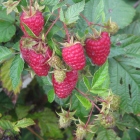
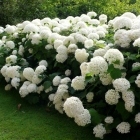
 Start a discussion ...
Start a discussion ...